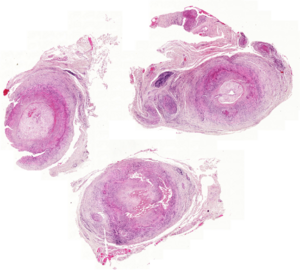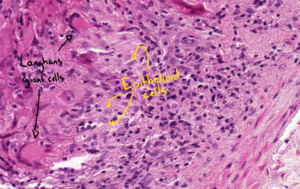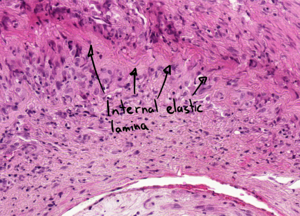41. Arteritis temporalis

Staining: HE
Organ: Superficial temporal artery
Description:
Three cross-sections of an artery can be seen. The upper right one is the easiest to examine. We can see giant cells, epithelioid cells, lymphocytes and plasma cells. The lumen of the artery is really narrow and the internal elastic lamina is disrupted.
Diagnosis: Temporal arteritis, a form of giant cell arteritis
Etiology:
- Older people
- Females more affected than males
Theory:

Giant cell arteritis, or temporal arteritis (when it affects the temporal artery) is a granulomatous inflammation that affects large arteries. Characteristic for the disease is that only certain parts of the affected artery show the histological signs of inflammation. If a preparation was taken from one of these parts could a false negative diagnosis be made. Optimally should a longitudinal section of the artery be examined, or multiple cross-sections (which could be why we have three sections here).


